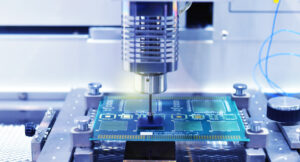Artificial Intelligence is transforming the way that the world lives, works, plays and nearly every industry. Most AI development has been limited to the amount of data and computing bandwidth needed to train the AI model, while that’s been adequate for many functions, the potential is far greater to evolve every aspect of our lives.
The key to unlocking the full potential is semiconductors. The manufacturing opportunities play a leading role in driving the next wave of computing and economic innovation.
“As Artificial Intelligence becomes more ubiquitous, hardware is playing a more significant role in the advancement of AI. This is a huge opportunity for the semiconductor industry, but also comes with pains that the industry needs to address.”
— SHUNGO SAITO, Director – Program Development, Global Semiconductor Alliance (GSA)
There are three key observations in the semiconductor industry that are driving the evolution of AI across two critical components. These components will challenge the industry into rethinking the way we operate and collaborate its monetization strategy, energy consumption and the trajectory of AI technology evolution and scalability.
Major trends driving AI evolution
Training and inferencing are critical components of AI applications that are driving these trends in the semiconductor industry.
When it comes to addressing demanding AI applications, there are two options to consider on either having the compute and data storage within the same chip or using off-chip memory that is specifically designed to handle high bandwidth and high capacity modeling.
The semiconductor industry has been advancing Moore’s Law for decades, despite predicting its death many times. As we look to the future of AI, there are various options for meeting the exponentially increasing compute power that will be required.

